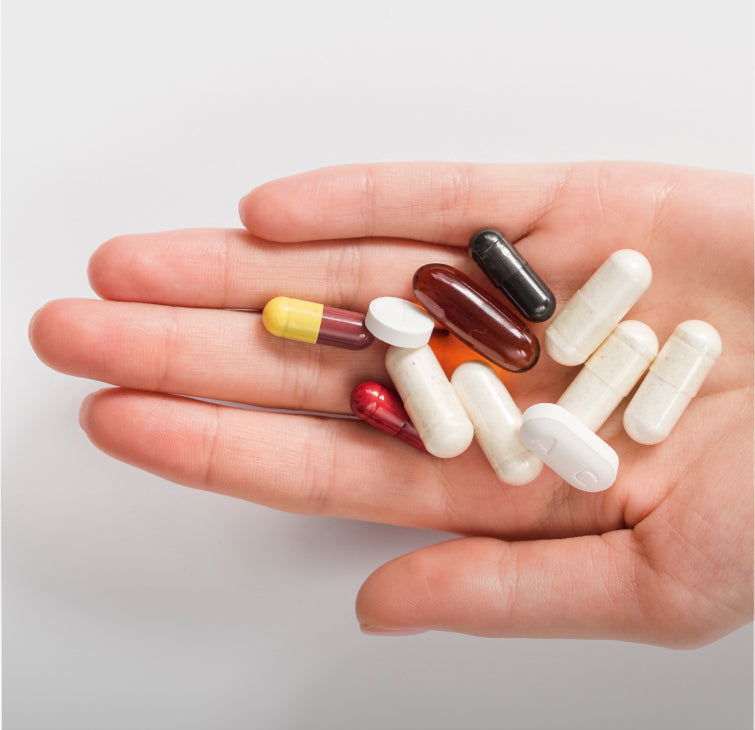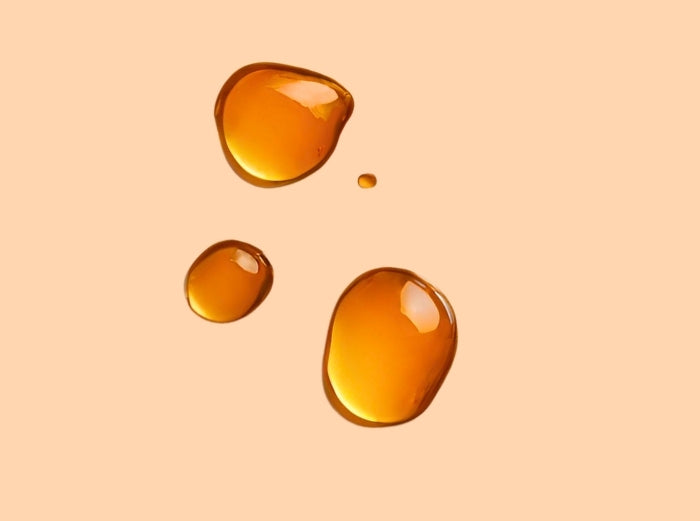Vitamin D is of fundamental importance from birth. It is essential for the fixation of bone calcium and directly contributes to the child's growth and the formation of their skeleton, which will impact their entire life.
As a hormone, our body knows how to synthesize it through exposure to the sun, which generally reduces the need for food intake in summer.
However, for young children, it must be provided through food or supplements because they must not be exposed to the sun, given the fragility of their skin and the subsequent risks that this entails.
Before weaning, supplementation is even the only reliable source of vitamin D for infants because natural milk, including breast milk, is insufficient to cover their needs.
In this article we summarize the best practices to adopt for young people with regard to this vitamin.
What is vitamin D3 and its role in children ?
Vitamin D is actually both a vitamin provided by food and a hormone synthesized by the body when the skin is exposed to the sun, under the action of UV-type B rays.
It exists in 2 main molecular forms:
- Vitamin D2 (Ergocalciferol): mainly produced by plants
- Vitamin D3 (Cholecalciferol): mainly produced by animals and some plants (lichens, etc.). This is also the form synthesized by the body.
In the body, after passing the intestinal barrier, these molecules undergo enzymatic modifications in the liver and kidneys to be converted into their active form: calcitriol.
Calcitriol is involved in several key physiological mechanisms, including calcium and phosphorus uptake, cell differentiation and multiplication, and immunity.
The role of vitamin D is not limited to the assimilation of calcium , but in young children it is its main benefit, as the size and strength of the skeleton are parameters that will impact their entire life.
Which forms of vitamin D should be preferred for children?
There is scientific consensus: it is preferable to choose vitamin D3 for vitamin D supplementation in children, babies and adults.
Vitamin D3 (cholecalciferol) is more stable over time and more directly assimilated and functional than vitamin D2. It is also the form produced by the skin during exposure to the sun.
These biological differences make vitamin D3 the best option for vitamin D intake in children.
Until recently, commercially available vitamin D3 was of animal origin and often derived from lanolin in sheep's wool. This forced vegans to turn to vitamin D2.
Now there is vitamin D3 of plant origin , produced from a sustainable resource that is not threatened by the harvesting carried out: boreal lichen.
The benefits of vitamin D in children
As in adults, vitamin D has essential multifunctional effects in children.
She plays a role in:
- Regulation of bone health
- The immune system
- The development of the organism (cell differentiation and growth).
Vitamin D is therefore central to the harmonious growth of children: on the skeleton, but also for good dental mineralization and cell multiplication. The consequence of prolonged deficiencies is rickets.
Vitamin D's role as an immune booster is also fundamental in young people whose bodies are not yet strong enough to withstand infections.
Vitamin D is essential for the healthy development of children.
The consequences of vitamin D deficiency in children
Vitamin D deficiency is rare in our country today .
It has a name whose memory testifies to its past prevalence: rickets, a common pathology until the middle of the 20th century.
It is a disease characterized by insufficient bone mineralization, leading to:
- Bone deformities
- A growth delay
- Bone pain
- Spontaneous fractures in children
To determine the vitamin D dosage in children, it is necessary to measure the concentration of the molecule 25 Hydroxyvitamin D (noted 25OHD) in the blood (plasma).
Deficiency occurs when 25 0HD levels are below 25 nanomoles (Nmol)/litre. However, when the concentration is below 50 nmol/litre, the level is still insufficient.
The appropriate range is between 50 and 150 nmol/l (source: Haute Autorité de Santé). However, it is prudent for young people to keep blood levels below 100 nmol/liter to avoid any risk of hypercalcemia.
Beyond its effects on bones, vitamin D deficiency also impacts the immune system, potentially increasing the risk of infections and autoimmune diseases.
Other studies have found links between vitamin D deficiency and neurological disorders, such as developmental delays and mood swings.
What foods rich in vitamin D are suitable for children?
It should first be noted that breast milk, or animal milk (cow, sheep, goat) contain vitamin D but in too low a proportion to constitute a basis for significant intake.
In addition, before food diversification, supplementation is essential
After diversification, certain foods will gradually provide increasing quantities of vitamin D:
- Oily fish:
Salmon, mackerel, and sardines are excellent sources of vitamin D3. However, their toxic heavy metal content means their consumption should be limited (maximum once a week). Cod liver oil was the only available supplement for a long time.
- Eggs:
An egg yolk provides on average 15 to 20% of daily requirements (2 to 3 µg).
- Natural milks:
They have low levels, but their more concentrated derivatives (yogurts, cheeses) have increased levels (proportional to their dry matter content). Vitamin D-enriched products are also common today.
- Plant foods:
They have very low levels of vitamin D2: around 2µg/100g for mushrooms, which are the richest species.
However, it is important to remember that the lower exposure of young children to the sun means that it is more difficult to meet their vitamin D needs through diet alone (particularly for the youngest).
It is prudent to maintain a portion of the intake through specific supplementation.
What is the recommended dose of vitamin D for babies and children?
Vitamin D is not soluble in water but in oils.
This explains their low urinary elimination and their storage in adipose tissues and makes possible significant and irregular intakes (by injection).
Moderate and regular intake is always preferable to avoid excessive blood peaks.
In its latest update in 2022, the French Pediatric Society recommends daily vitamin D2 or D3 supplementation ranging from 400 to 800 IU (10/20µg) for children aged 0 to 18.
However, the French Agency for Food, Environmental and Occupational Health Safety (ANSES) specified in March 2021 that an intake of 400 international units (IU) of vitamin D per day (i.e. 10 µg) is sufficient for one-year-old children.
Is there a risk of vitamin D overdose in children?
Yes, there is a real risk of vitamin D overdose in children if their intake is excessive.
This is all the more so since children have a renal regulatory enzymatic mechanism that appears to be less effective than that of adults.
ANSES considers that the Maximum Daily Intake (MDI) for children under 1 year old is 25 µg (1000 IU), then 2000 IU from 1 to 3 years old.
Massive overdoses of Vitamin D can lead to hypercalcemia (excess calcium in the blood) which can lead to renal calcifications with serious consequences.
These overdoses are rare and occur by mistake:
- Either due to poor application by parents
- Either because of the accumulation of supplementation at home with medical prescriptions
This is why, particularly with vitamin D , care must be taken when administering it to the child (always by the same person). It is also important to keep the product out of reach of the child and it is essential to define the supplementation in agreement with the pediatrician.
Should we give vitamin D as a dietary supplement to children?
As explained above, vitamin D is fundamental for the proper growth of children, from birth.
However, young children should not be exposed to the sun; only external sources need to be taken into consideration.
Also, before weaning, supplementation equivalent to 400/500 IU/day is essential for infants.
After diversification, supplementation remains a good prudent practice (400/800IU) because food will provide part of the needs which are difficult to estimate and rarely sufficient in the first years.
If you choose to supplement with vitamin D, it's essential to inform your pediatrician. For example, you can provide details of the composition of our vitamin D3 supplement, which is suitable for both children and adults, with a dosage of 500 IU per spray. It's easier and safer to administer than droppers, and a single spray is sufficient for toddlers.
Bibliography:
- Anses : https://www.anses.fr/fr/content/vitamine-d-pourquoi-et-comment-assure-un-apport-suffisant
- ANSES: March 2021: nutritional references for vitamins and minerals
- Vitamin D2 vs D3 : Relative Efficacy of Vitamin D2 and Vitamin D3 in Improving Vitamin D Status: Systematic Review and Meta-Analysis: https://www.mdpi.com/2072-6643/13/10/3328
- Vitamin D and Sun Exposure in Children: https://pubmed.ncbi.nlm.nih.gov/31739173/
- High Authority of Public Health (June 2022) 'Opinion relating to the coverage of vitamin D and iron requirements'
 04 74 03 98 80
04 74 03 98 80










